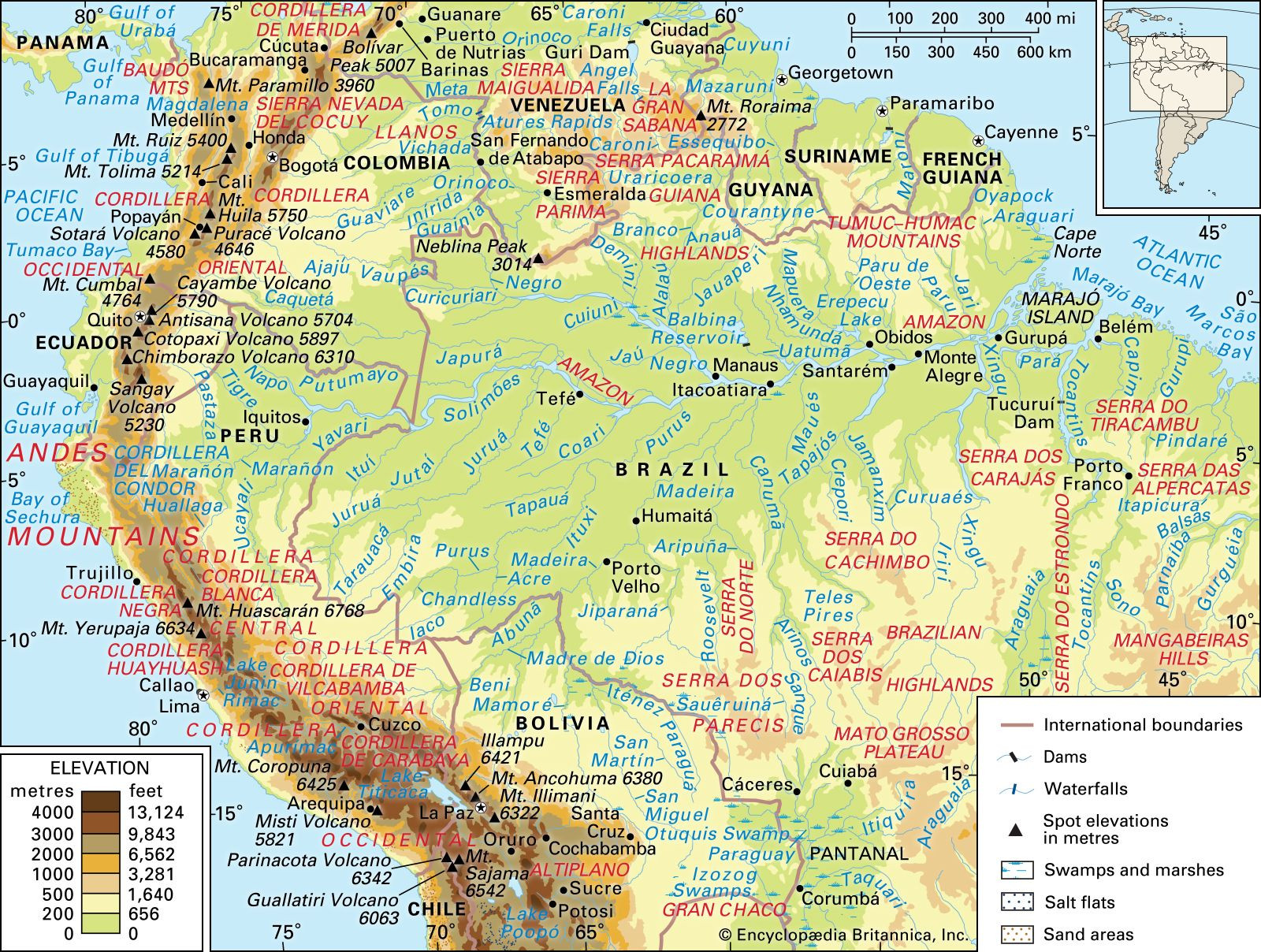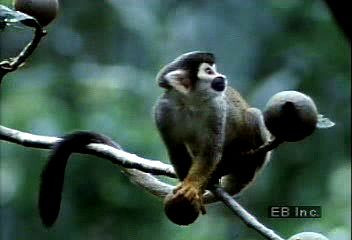The Amazon Rainforest, a name synonymous with lush biodiversity and immense scale, is the planet’s largest tropical rainforest. It dominates a significant portion of northern South America, acting as the heart of the Amazon basin. This vast, verdant expanse is primarily defined by the drainage basin of the mighty Amazon River and its numerous tributaries.
 Central and Northern Andes and the Amazon River basin and drainage network
Central and Northern Andes and the Amazon River basin and drainage network
The Amazon River basin and drainage network as seen from space, highlighting the geographical relationship between the Andes Mountains and the rainforest.
Geographically, the Amazon Rainforest is nestled within northern South America. It’s a colossal ecosystem, covering an estimated 2,300,000 square miles (6,000,000 square km). To put it into perspective, this single rainforest comprises about 40 percent of Brazil’s entire landmass, showcasing its overwhelming size and regional importance.
Defining the Boundaries of the Amazon Jungle
To understand precisely where the Amazon jungle is, it’s crucial to define its geographical boundaries. The rainforest is naturally bordered by significant geographical features:
- North: The Guiana Highlands form the northern edge, a region of ancient mountains and plateaus.
- West: The towering Andes Mountains delineate the western extent, marking a dramatic transition from rainforest to high-altitude peaks.
- South: The Brazilian central plateau shapes the southern border, a vast area of tablelands and savanna.
- East: The Atlantic Ocean provides the eastern boundary, where the Amazon River finally meets the sea.
This immense basin, fed by the Amazon River, stretches from the Atlantic coast inland to the Andean foothills. Starting as a 200-mile (320-km) wide front along the Atlantic, the forest expands dramatically to a belt 1,200 miles (1,900 km) wide where the lowlands meet the Andes.
The Climate Shaping the Amazon
The Amazon rainforest’s location is intrinsically linked to its climate. The region is characterized by consistently high rainfall, intense humidity, and uniformly high temperatures throughout the year. This climate trifecta is the very reason for the rainforest’s immense size, continuous nature, and exceptional biodiversity. The consistent warmth and moisture create ideal conditions for plant growth year-round, fostering the dense and complex ecosystem we know as the Amazon rainforest.
Educational still frame emphasizing the critical global role of rainforests in maintaining ecological balance and supporting diverse life forms.
A Hotspot of Biodiversity
The Amazon Rainforest is globally recognized as the most biologically diverse region on Earth. It serves as a vast reservoir of life, housing millions of species of insects, plants, birds, and countless other life forms, many of which remain undiscovered by science. This incredible variety includes a wide array of tree species, such as myrtle, laurel, palm, and acacia, alongside economically important trees like rosewood, Brazil nut, and rubber trees. The forest also yields valuable timber from mahogany and Amazonian cedar.
The wildlife is equally spectacular, featuring iconic species like jaguars, manatees, tapirs, red deer, capybaras, numerous rodent species, and various types of monkeys. The sheer density and diversity of life in the Amazon are unparalleled, making it a critical area for global ecological balance.
 Glimpse the Amazon Rainforest
Glimpse the Amazon Rainforest
A vibrant collage showcasing the diverse animal inhabitants of the Amazon rainforest, including monkeys, sloths and macaws in their natural habitat.
The Shrinking Amazon: Deforestation and Conservation
Despite its vastness, the Amazon Rainforest faces significant threats, primarily from deforestation. In the 20th century, Brazil’s growing population led to substantial settlement within the Amazon, resulting in widespread forest clearing for lumber, grazing pastures, and farmland. Brazil, holding approximately 60 percent of the Amazon basin, witnessed a dramatic reduction in forest cover. While in 1970 around 1,583,000 square miles (4,100,000 square km) were forested, this decreased to approximately 1,283,000 square miles (3,323,000 square km) by 2016.
Visual representation of deforestation patterns in the Amazon basin, highlighting the impact of agriculture and land clearing on the rainforest ecosystem.
Although the rate of forest loss has slowed since the 1980s and 90s, recent increases in fires, particularly in 2019, raise serious concerns. However, alongside these threats, there are ongoing conservation efforts. Initiatives by the Brazilian government and international organizations aim to protect parts of the forest from further destruction. Ecuador’s Yasuní National Park, for example, represents a unique attempt to balance development with preservation, although challenges remain.
Close up image highlighting the variety of arthropods found in the Amazon rainforest, including spiders, scorpions, and butterflies, demonstrating the regions biodiversity.
In conclusion, the Amazon Rainforest is located in northern South America, primarily within Brazil but extending into neighboring countries. Its boundaries are defined by major geographical features, and its existence is dictated by a consistently warm and wet climate. This location fosters unparalleled biodiversity, making the Amazon a vital global asset that requires continued attention and conservation efforts to ensure its survival for future generations.
 tropical forests and deforestation
tropical forests and deforestation
A global map illustrating the distribution of tropical forests and the areas affected by deforestation, emphasizing the worldwide impact of rainforest loss.

